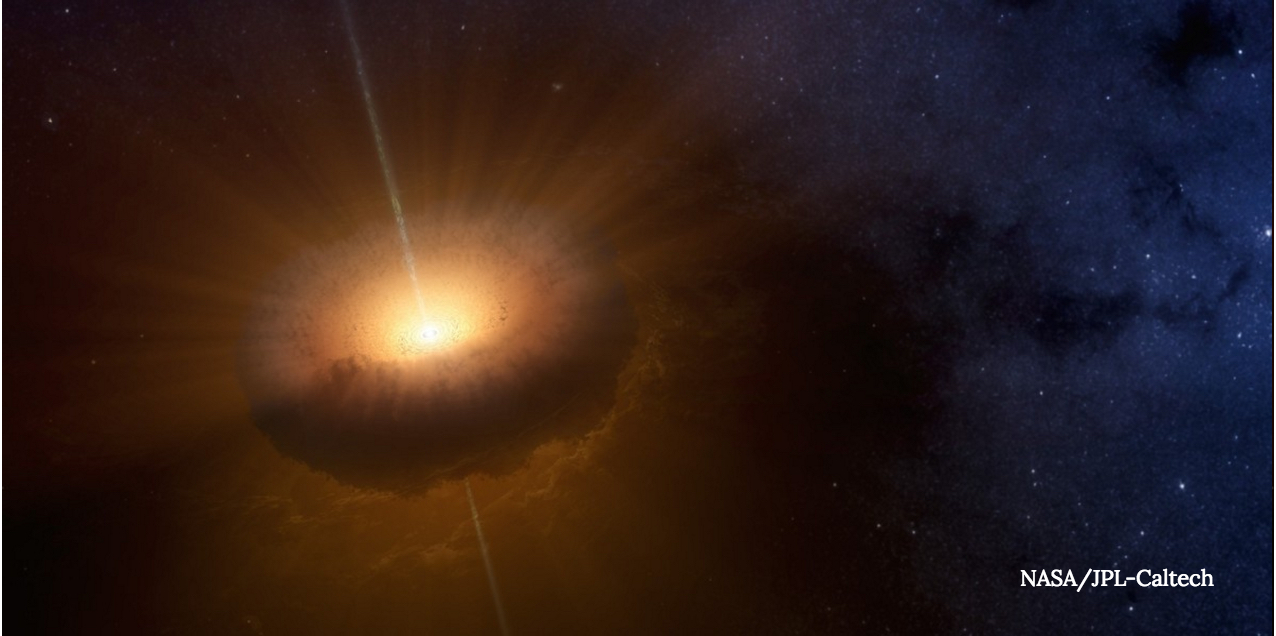Mysterious Baby Star Throws a Tantrum... Alone

A very young star has been discovered by itself, far from any star forming region. It is so isolated that astronomers are confounded as to how it came to be.
By collecting data from several observatories, researchers have realized that the star, called CX330, is going through an outburst. This energetic phase in the star's youth has heated the gas and dust surrounding it, making it glow in infrared radiation.
RELATED: Baby Star's 'Placenta' Precisely Measured for the First Time
The fact that its outburst has been detected puts it in an already rare collection of stellar objects, but what makes CX330 unique is its apparent solitude. Frankly, the star shouldn't exist and in earlier observations it wasn't clear if it was even a star.
"We tried various interpretations for it, and the only one that makes sense is that this rapidly growing young star is forming in the middle of nowhere," said Chris Britt, of Texas Tech University in Lubbock, in a statement. Britt is lead author of a study focusing on CX330published in the Monthly Notices of the Royal Astronomical Society.
WATCH VIDEO: The Youngest Galaxy and Oldest Star
By comparing infrared observations by NASA's Wide-field Infrared Survey Explorer (WISE) and Spitzer Space Telescope, Britt's team found the star had increased in brightness 100-fold between 2007 and 2010. Only around a dozen stars exhibiting this type of rapid outburst have been recorded, but all were found in dense star-forming regions inhabited by other young stars. These stellar nurseries are hothouses for star formation.
Get the Space.com Newsletter
Breaking space news, the latest updates on rocket launches, skywatching events and more!
RELATED: Star's 'Ring of Death' Might Birth Baby Planets
But CX330 is 1,000 light-years from the nearest star forming region, leaving the researchers to speculate how it ended up by itself in an apparently empty void.
Could it be possible that the star was formed in a star formation region, only for it to be gravitationally slingshot out of the nest? This is highly unlikely as astronomers estimate the star is only a million years old and it is still consuming the gas and dust surrounding it. All lines of inquiry point to the fact the star was born where it is now and hasn't migrated far.
Another idea is that it might not be alone at all and it's with a group of other very faint stars, though there is no observational clues of their existence.
Regardless of its origins, we are very lucky to see the energetic outburst of a young star as this phase is predicted to last only a few years -- a fraction of a moment when considering the millions to billions of years life cycle of a star.
RELATED: 'Revolutionary' New View of Baby Planets Forming Around a Star
The last observations of CX330 were taken in 2015 and astronomers hope to check in with the baby star again soon to see whether it is still having a tantrum. By doing so, they hope to refine stellar evolution models. One model of star birth suggests singular stars can be born alone, far from the frenzied star nurseries where many stellar embryos compete for material to grow, sparked by turbulence in an interstellar cloud. If CX330 really is a stellar loner, it could be a unique example of this fascinating star formation model.
Source: NASA/JPL-Caltech
Originally published on Discovery News.
Join our Space Forums to keep talking space on the latest missions, night sky and more! And if you have a news tip, correction or comment, let us know at: community@space.com.
Ian O'Neill is a media relations specialist at NASA's Jet Propulsion Laboratory (JPL) in Southern California. Prior to joining JPL, he served as editor for the Astronomical Society of the Pacific‘s Mercury magazine and Mercury Online and contributed articles to a number of other publications, including Space.com, Space.com, Live Science, HISTORY.com, Scientific American. Ian holds a Ph.D in solar physics and a master's degree in planetary and space physics.












